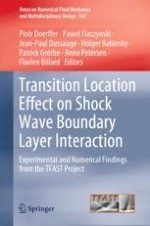2021 | OriginalPaper | Chapter
WP-3 Internal Flows—Compressors
Authors : Patrick Grothe, Pawel Flaszynski, Ryszard Szwaba, Michal Piotrowicz, Piotr Kaczynski, Benoit Tartinville, Charles Hirsch, Alexander Hergt
Published in: Transition Location Effect on Shock Wave Boundary Layer Interaction
Publisher: Springer International Publishing
Activate our intelligent search to find suitable subject content or patents.
Select sections of text to find matching patents with Artificial Intelligence. powered by
Select sections of text to find additional relevant content using AI-assisted search. powered by
